Our understanding of our distant ancestors and their clans was formed in the nineteenth and twentieth centuries, and back then, there were no significant breakthroughs or discoveries. Skulls, jaws, and, more commonly, phalanges and teeth filled museums, prompting only subdued excitement in the specialized academic press. However, in the 2000s, everything changed with the emergence of a new science—paleogenetics. This discipline gave a voice to long-muted remains, unveiled previously undiscovered human species, and provided unparalleled insight into the lives of our ancestors, whose legacy had been preserved solely through bone fragments. Professor Alexander Markov recounts the incredible discoveries made in the last decade.
The Denisova Cave in the Altai Mountains rose to global prominence in 2010, when the examination of fragments of ancient DNA extracted from a minuscule bone (commonly referred to as Denisova 3) identified an unknown type of ancient human—the Denisovans, or more precisely, a Denisovan girl. What do we know now about the Denisovans? Well, it is clear that multiple human species coexisted, sometimes separately, in Eurasia. They interacted, interbred, transformed landscapes, ventured into high mountains, hunted, loved, quarreled, pondered the eternal. Among them, a Denisovan girl perished, decomposed, leaving behind only a fragment of a pinky phalanx. Remarkably, after many millennia, this small bone, bypassing the eras of Alexander the Great, Genghis Khan, Napoleon, Mao Zedong, and Taylor Swift, has granted us access to the silent world of prehistoric humans.

Replica of a Denisovan finger bone fragment, originally found in Denisova Cave in 2008, at the Museum of Natural Sciences in Brussels, Belgium/Wikimedia commons
WHAT A SINGLE BONE CAN REVEAL
In 2012, scientists conducted complex and extensive research and managed to decode the genome of the Denisovan human and compared it with other genomes. They selected the genomes of eleven modern humans: five Africans, two Europeans, three Asians, and one South American Indian. The Denisovan genome was found to be slightly more similar to that of a chimpanzee than to modern humans. There are 1.16 per cent fewer differences between the Denisovan and chimpanzee genomes. This is because modern humans had more time to accumulate neutral differences from chimpanzees than the Denisovan girl, who lived tens of thousands of years ago. According to the latest data, she lived 52,000 to 76,000 years ago.
How did we arrive at this date? The answer lies in molecular clocks. The rate of DNA change accumulation is relatively constant, around 1.16 per cent. If the ancestors of humans and chimpanzees diverged 6.5 million years ago, and from that moment until the death of the Denisovan girl, 1.16 per cent less time passed than until the present, then the age of the discovery is approximately 75,000 years. This was the first serious attempt to use paleogenetic data to date fossil remains. At that time, nothing could be said about the reliability of such a method, but further research confirmed that it worked rather well.
The analysis revealed that some populations of ancient Homo sapiens, particularly the ancestors of modern Papuans, interbred with the Denisovans and inherited up to 6 per cent of their DNA from them. Denisovan genetic contributions were not detected in the genomes of other Asian populations at that time. However, it became evident later that there is a smaller but still significant presence of Denisovan DNA in the genomes of people from East Asia, including the Chinese, Japanese and indigenous Americans. This suggests that while the western part of Eurasia was inhabited by the Neanderthals, the Denisovans were dominant to the east of the Altai Mountains.
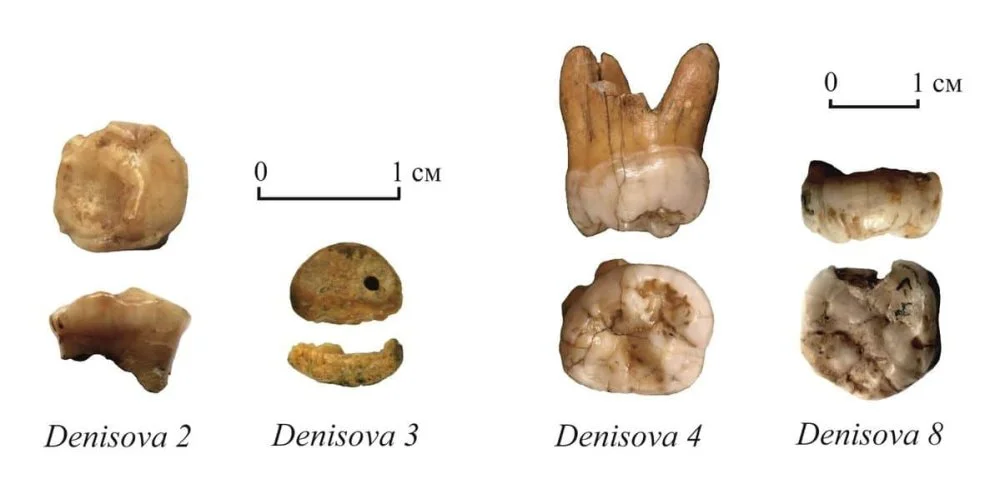
Denisovan fossils © Institute of Archaeology and Ethnography SB RAS
HOW MANY DENISOVANS WERE THERE?
In 2012, the genome of a single individual from this mysterious population was revealed, with scarce accompanying information available. What then can be learned about an unknown people from just one carefully read genome? As it turns out, quite a lot.
For example, it was possible to estimate the population size native to the Denisovan girl. For this, it was necessary to understand how similar her parents were in terms of genomes. If the parents were genetically similar to each other, then their daughter would have the same allelesi
The level of heterozygosity in the Denisovan girl was found to be five times lower than in modern Africans, four times lower than in modern Europeans and Asians, and almost three times lower than in South American Indians from the Karitiana ethnic group, who have an extremely low level of heterozygosity, indicating minimal mixing with outsiders. While it's possible that the girl's parents were very closely related, perhaps even siblings, the identical segments in the parental genomes were numerous but short—as if they had fragmented. Consequently, scientists favor another scenario: the parents originated from different families and did not share recent common ancestors. However, the entire population they belonged to was so small that its members inevitably interbred with relatively close relatives over many generations, resulting in a low overall level of genetic diversity within the population.
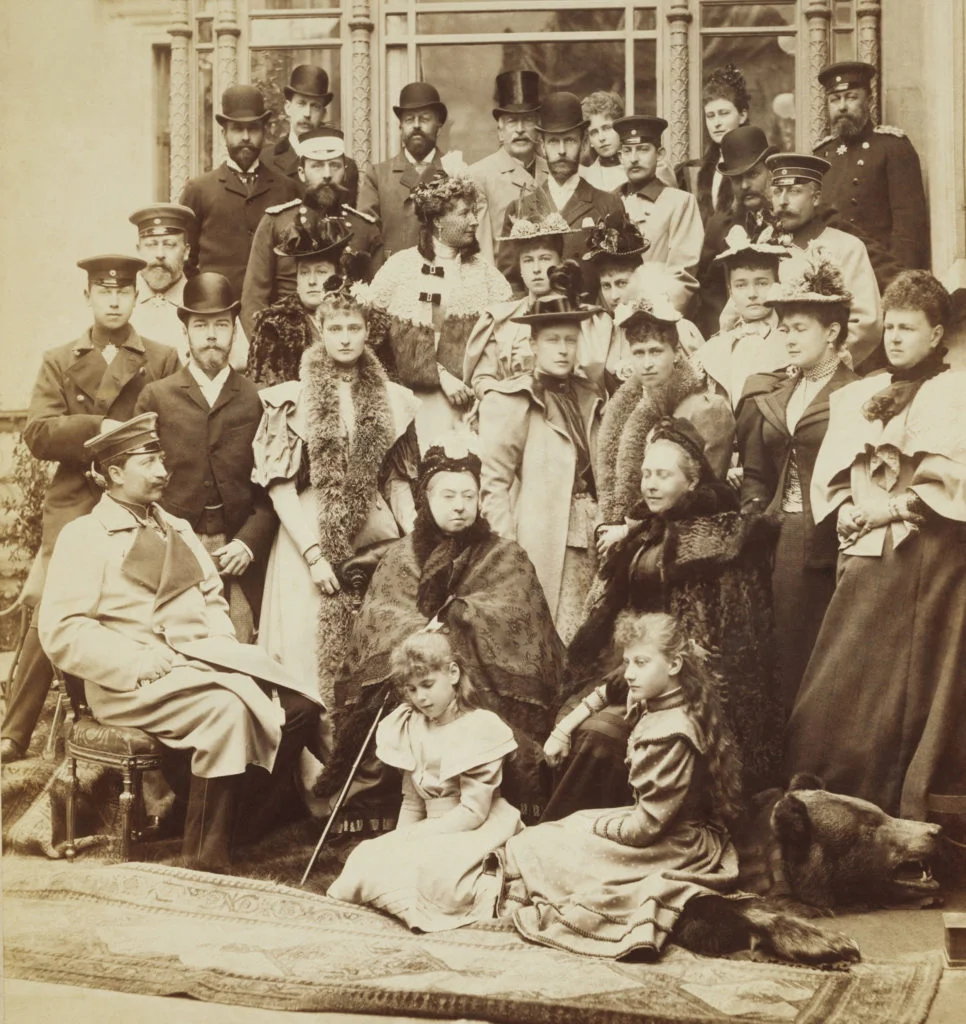
Royal family group photograph at Coburg following the wedding of Princess Victoria Melita of Saxe-Coburg and Gotha, and Grand Duke Ernest of Hesse, April 1894/getarchive.net
The residents of the Denisova Cave could be likened to the insular world of European royal families on the eve of the First World War, who were closely interrelated due to numerous marriages over generations. It's likely their level of heterozygosity was also lower compared to the South American Indian Karitiana tribe (although who was counting!). However, considering the chaos caused by these royal families during the First World War, they didn't deviate much from the essence of the Denisovans.
THE UNDERACHIEVERS OF WORLD HISTORY
But modern comparative genomics can accomplish much more than that. We now have statistical methods that allow us to estimate changes in population size in the past based on the analysis of a single genome. The idea is that by taking the genome of any individual, which consists of maternal and paternal halves, we can count the number of mutations that differ between these two halves. This helps us understand the extent of the genetic variations between the mother’s and father’s genomes. The same operation can be done separately for each small fragment of the genome. Then, for each fragment, based on the number of differences in the two halves, we can estimate the time during which their common ancestor existed—not just any ancestor but specifically an ancestor for that particular fragment of the genome. In other words, this is the ancestor from whom the individual with the studied genome inherited this specific fragment, through both the mother and the father.

Stages in human evolution, illustration/ JOHN BAVARO FINE ART/Science Photo Library
This process works like this. In a small population, there's a high likelihood that two randomly chosen genomes are close descendants of the same ancestor. Consequently, the more frequently common ancestors appear within a particular timeframe, the smaller the population was during that period. Conversely, the fewer shared ancestral fragments that are found at any given time, the larger the population was at that point. Further, if we observe a clustering of ancestors at a specific moment, it clearly suggests that the population size was significantly smaller then, indicating a population bottleneck.
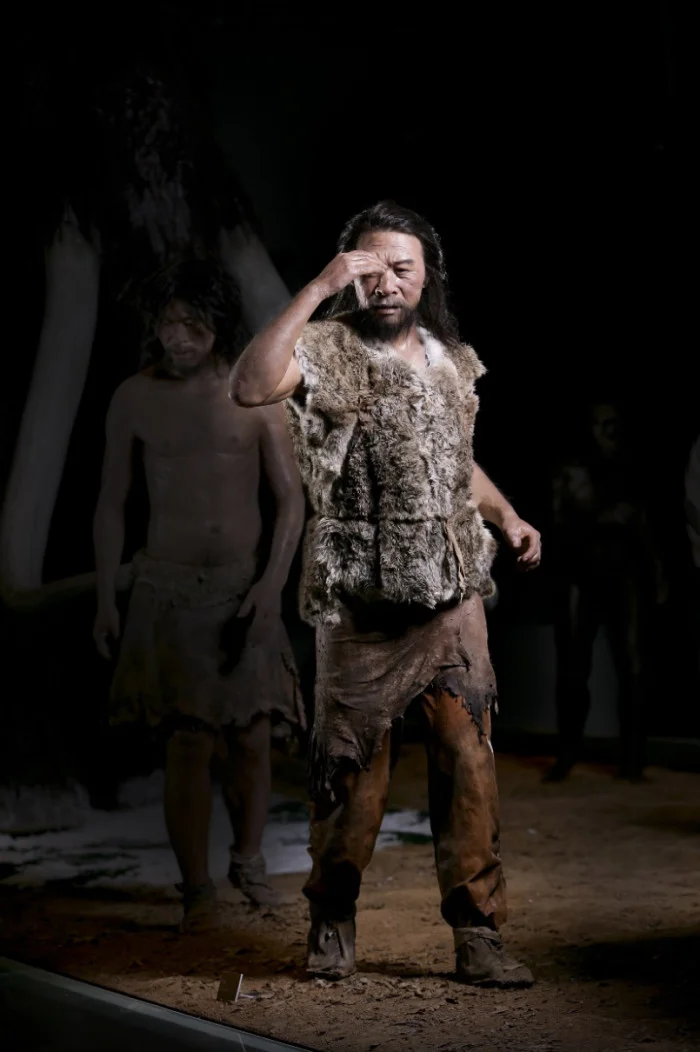
Upper cave man/Jeongok Prehistory Museum
For example, among non-African Homo sapiens, such a peak occurred 50,000 to 90,000 years ago. During this time, a small group of migrants from Africa ventured into the expanses of Eurasia, laying the foundation for modern populations in Eurasia, Australia, and the Americas.
Applying this approach to the genome of the Denisovan girl, scientists concluded that the population size of both the ancestors of modern humans and the Denisovans changed synchronously in ancient times (over 500,000 years ago). Evidently, it was the same population that had not yet diverged. Later, approximately 250,000–125,000 years ago, the population of Homo sapiens (our direct ancestors who then lived only in Africa) began to rapidly increase, while the Denisovan ancestors, on the contrary, decreased in number and remained small until the era of the Denisovan girl, around 52,000 to 76,000 years ago.
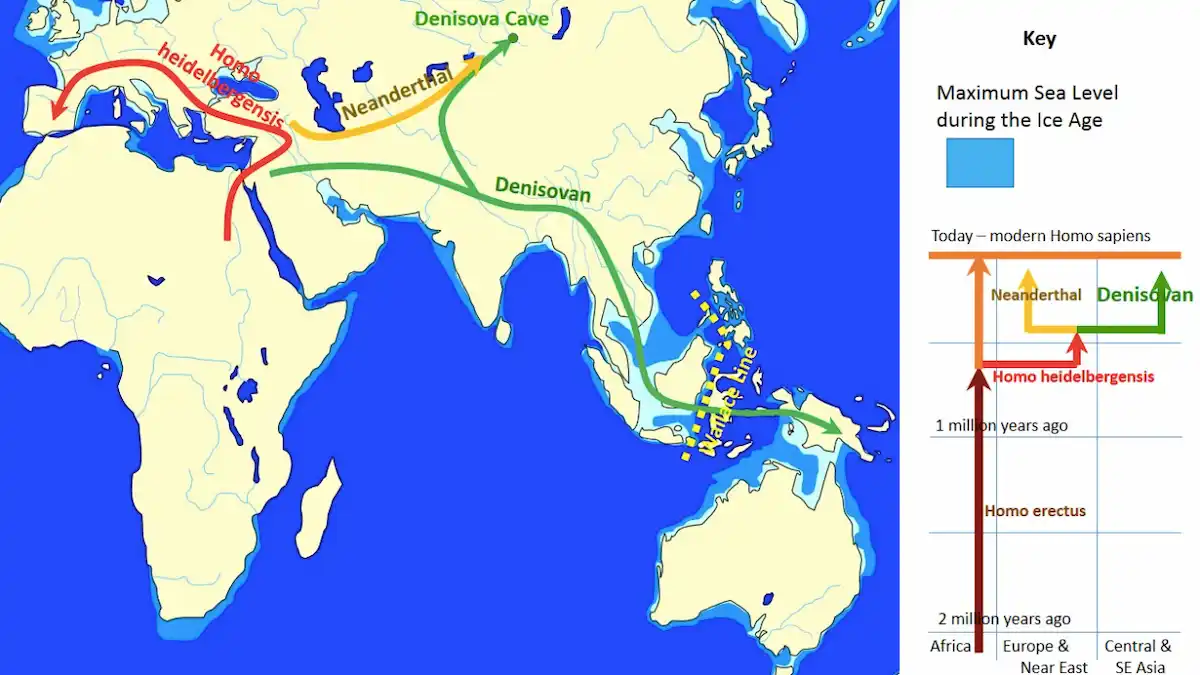
LESS, BUT WORSE
If the Denisovans were indeed less numerous than ancient Homo sapiens, this would have impacted the efficiency of evolutionary selection. It's known that in small populations, natural selection struggles more to eliminate harmful mutations. Beneficial mutations accumulate more slowly, while harmful ones accumulate more quickly. In other words, genetically small groups are more vulnerable than larger ones. The Neanderthals, it seems, were not a populous race either—at least not in the later stages of their existence. It appears that the ancestors of the Neanderthals and Denisovans weren't exactly thriving upon leaving Africa and settling across the Old World. They were few in number, lived in small scattered groups, married close relatives (like the parents of Denisova 5), and eagerly consumed their own kind.
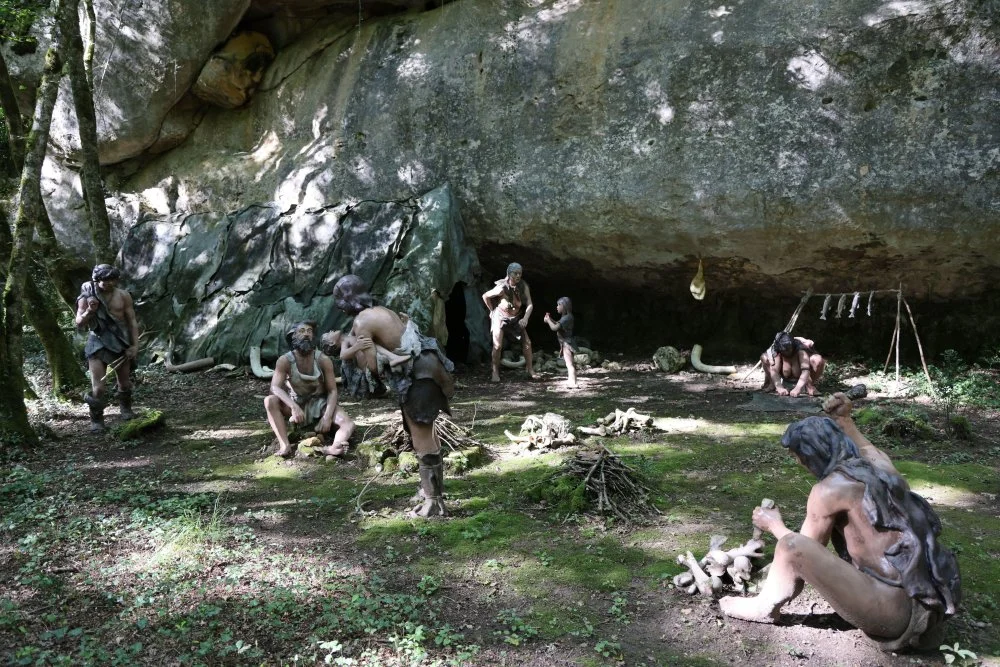
Scene of life during prehistory reconstructed at the Prehisto Parc in the Vézère River Valley in Périgord Noir in the Lascaux cave region. Tursac, , Périgord Noir, Dordogne, Nouvelle Aquitaine, France, Europe/Alamy
Moreover, the small populations of the Neanderthals and Denisovans lost out to Homo sapiens in the evolutionary race because small societies lack the right conditions for rapid cultural evolution. Useful knowledge accumulates more slowly in them and is, more often than not, lost.
Meanwhile, in Africa, the ancestors of Homo sapiens were reproducing, becoming more intelligent and cultured, and developing their brains. As they ventured out of Africa and spread across Eurasia, they continued to flourish. Perhaps they barely noticed the small groups of ‘degenerates’ they encountered occasionally in new territories, who soon vanished without a trace. However, as scientists have confirmed, there were occasional romantic encounters between them, which our genome remembers. Perhaps what's truly surprising here is not that these contacts occurred but that they occurred to such a limited extent. This suggests the existence of serious reproductive barriers.
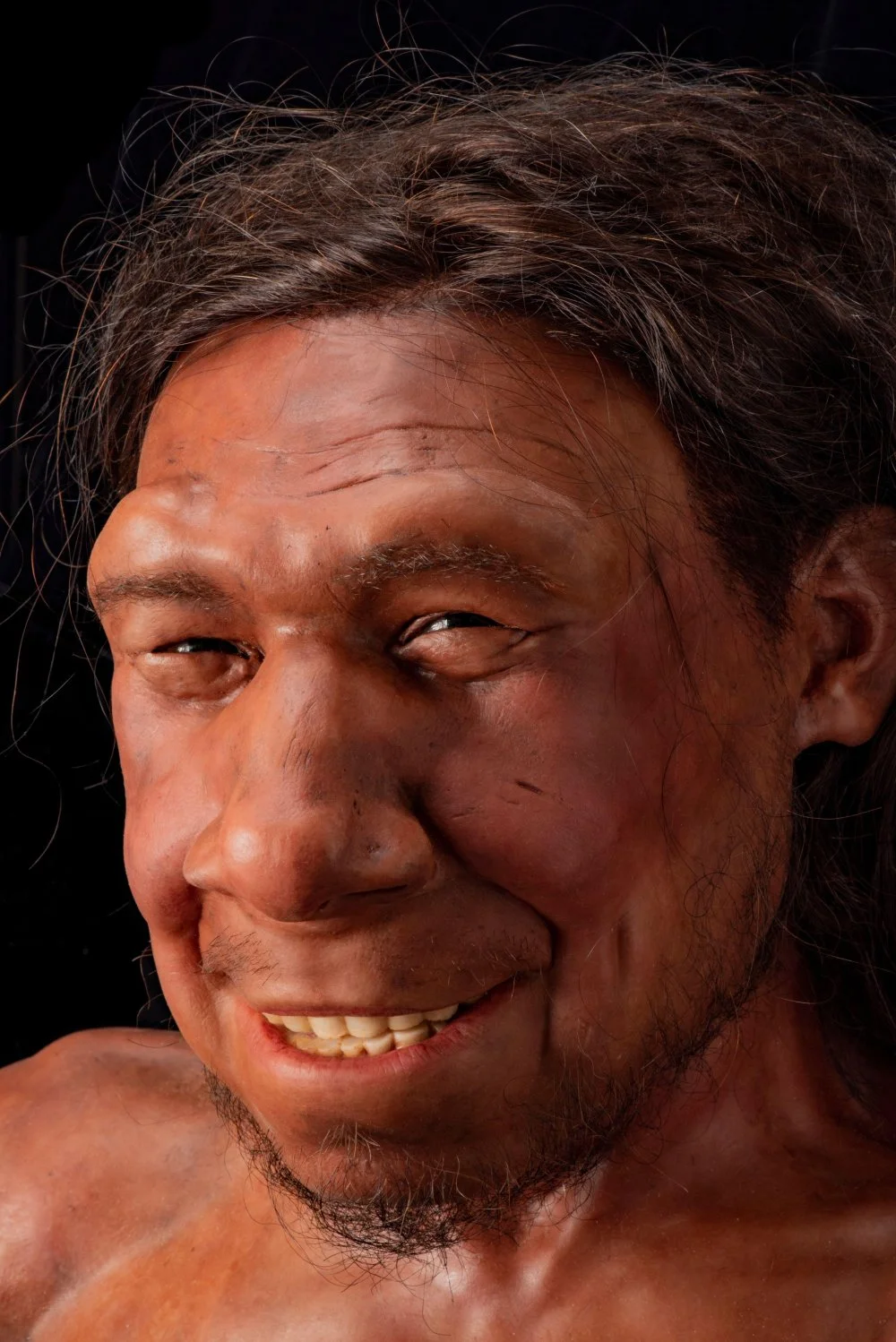
Neanderthaler reconstruction/Alamy
Let us consider the notion of ‘Have you seen yourself in the mirror?’ Perhaps this concept belongs to that category of barriers as well, but understandings of beauty and attractiveness still vary significantly from century to century. We will discuss the most significant barriers that separated the ancient human species in the final lecture of this course.
THE MONK AND THE JAWBONE
Until 2019, nearly everything we knew about the Denisovans was based on ancient DNA extracted from a few teeth and small bones discovered solely in the Denisova Cave in the Altai region. Several experts hypothesized that the Denisovans occupied not just the area around the Denisova Cave but were widely distributed. How else could one account for the notable presence of Denisovan genetic elements among Papuans? Alternatively, consider the traces of interaction with at least two genetically separate Denisovan groups found in the genetic makeup of present-day East Asians and Papuans. This includes evidence of contact with one of these groups as well as a third distinct one. Additionally, a unique allele (variant) of the EPAS1 gene, indicating adaptation to high altitudes and found commonly among modern Tibetans (likely inherited from the Denisovans), was discovered among the Denisovans. However, the Denisova Cave sits just 700 meters above sea level, which is not high enough for it to be necessary for them to develop survival skills at high altitudes.
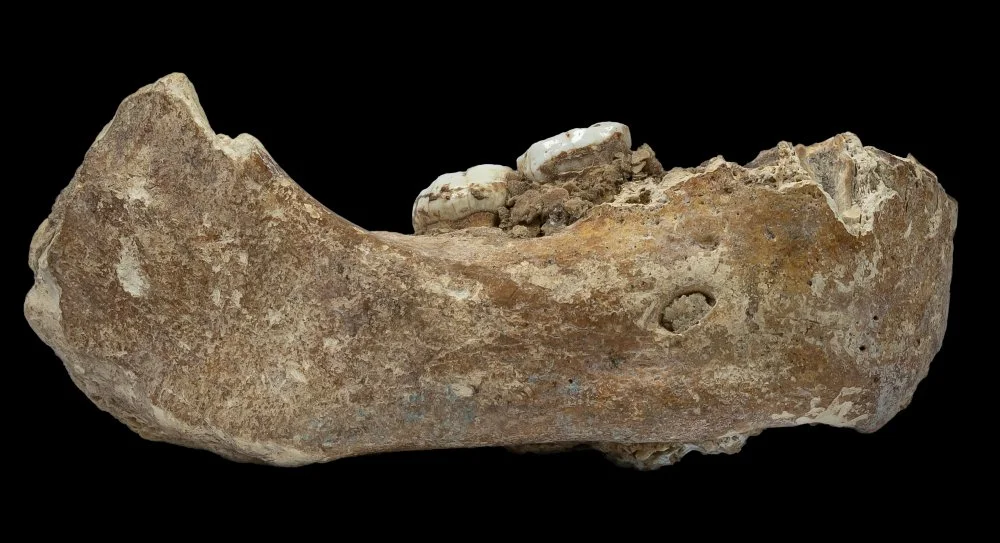
The lateral photograph of Xiahe mandible showing two attached molars. The mandible is the first confirmed discovery of a Denisovan fossil outside of Denisova Cave/Dongju Zhang/Wikimedia Commons
Nevertheless, all arguments supporting the widespread distribution of Denisovans across different regions in Asia, including high-altitude areas, remained circumstantial. The only confirmed location where Denisovans were found was the Denisova Cave. However, an article authored by nineteen paleoanthropologists and paleogeneticists from seven countries, and published in 2019, drastically altered this idea. This study describes a fragment of a lower jaw discovered in the Baishiya Karst Cave in Xiahe County, in the northeastern Tibetan Plateau, at an elevation of 3,280 meters above sea level.
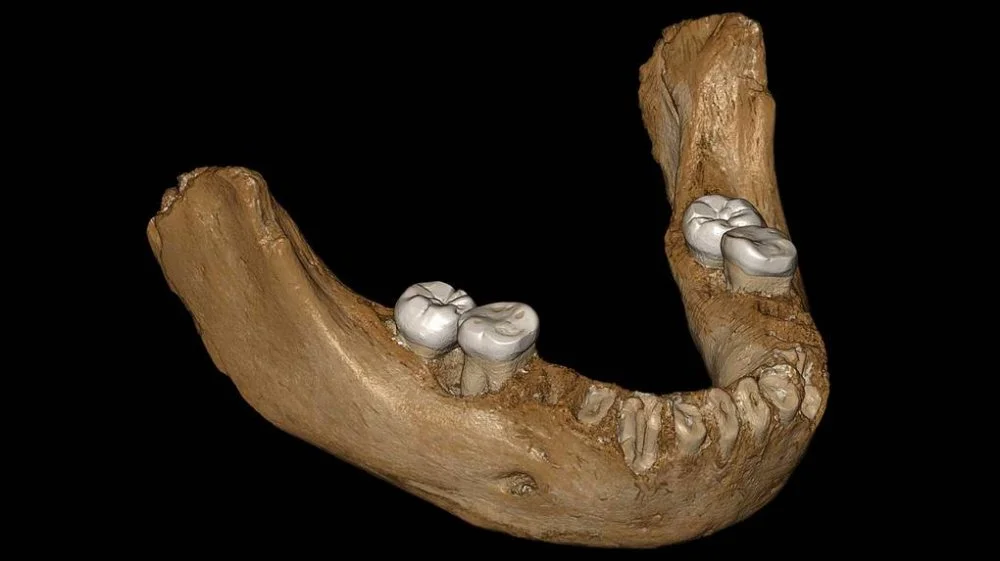
In 1980, the right half of a human jaw with the molars intact,i
Scientists never determined where exactly the jawbone was found in the cave. However, this did not hinder them from dating the discovery. Uranium-thorium dating revealed that the jawbone had last been used for chewing approximately 160,000 years ago. One can only hope that it was for a tasty meal. This suggests that humans had settled in the Tibetan Plateau as early as 160,000 years ago and enjoyed meals there, occurring at least 120,000 years earlier than previously thought.
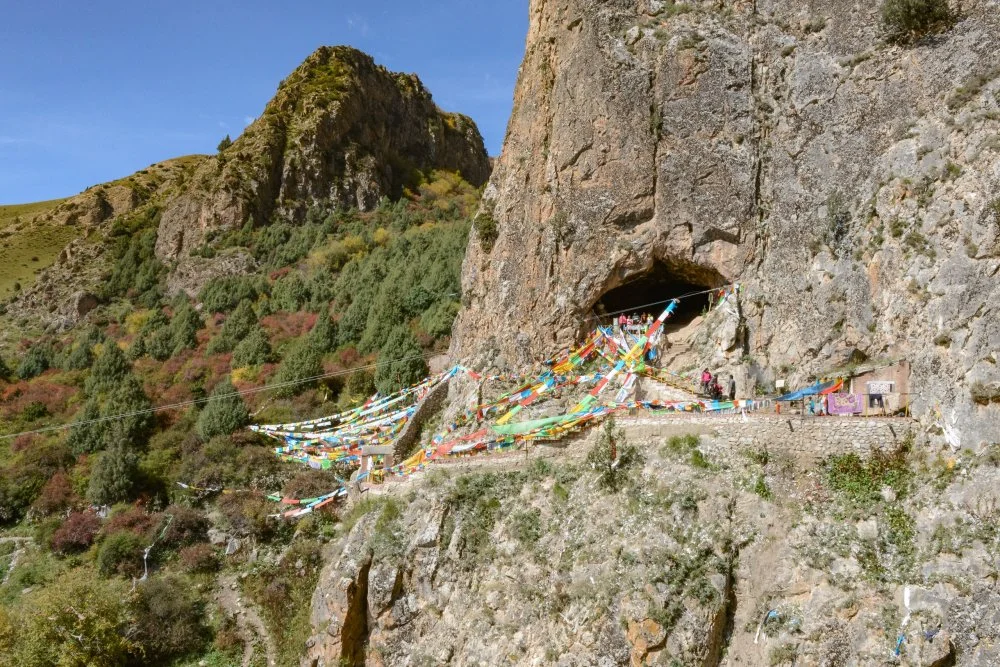
The entrance photograph of Baishiya Karst Cave. The Xiahe mandible was discovered in the cave/Dongju Zhang/Wikimedia Commons
But who were these ancient highlanders? Neanderthals, Denisovans, Homo sapiens, relict Homo erectus, or representatives of some previously unknown branch of the human race? A reliable answer to this question could be provided by ancient DNA. However, DNA did not survive in the jaw from Xiahe. Unfortunately, this is a common problem with paleoanthropological finds in regions with warm climates. Nowadays, even at an altitude of 3,300 meters in Tibet, it is much warmer than at 700 meters in the Altai Mountains, and this difference, apparently, persisted during the ice ages as well.
Fortunately, paleogeneticists have recently improved the method of identifying fossil bones by collagen residues, which are amongst the most abundant proteins in the human body and degrade very slowly. Therefore, the likelihood of these proteins being preserved in bones is very high— as a matter of fact, it is higher than in DNA. Frido Welker, his scientific supervisor Jean-Jacques Hublin, and their colleagues, who were scientists from the Max Planck Institute for Evolutionary Anthropology in Leipzig, joined the team of Chinese archeologists studying the jaw. With such a team of professionals, the discovery that we will now discuss became possible.

Working with genetic material under a microscope © AP Photo/Mark Schiefelbein
Fragments of ancient collagen molecules were extracted from the dentin of teeth, and the analysis of this data allowed this individual from Xiahe to be placed on the evolutionary tree. It turned out that the ancient Tibetan formed a single branch with the Denisovan from the Altai Cave. In simpler terms, the ancient Tibetan turned out to be a Denisovan! This is the main result of the study, but not the only one.
First, it became clear that populations of ancient Homo during the Middle Pleistocene, in the midst of the Ice Age, could adapt to the harsh conditions of high altitudes. Until now, it was believed that only Home sapiens were capable of such adaptation. Second, it was finally revealed why the EPAS1 gene variant, which helps cope with hypoxia and later became ‘useful’ to migrating Homo sapiens in Tibet, became widespread among the Denisovans. They actually lived high in the mountains, making this genetic variation beneficial to them.
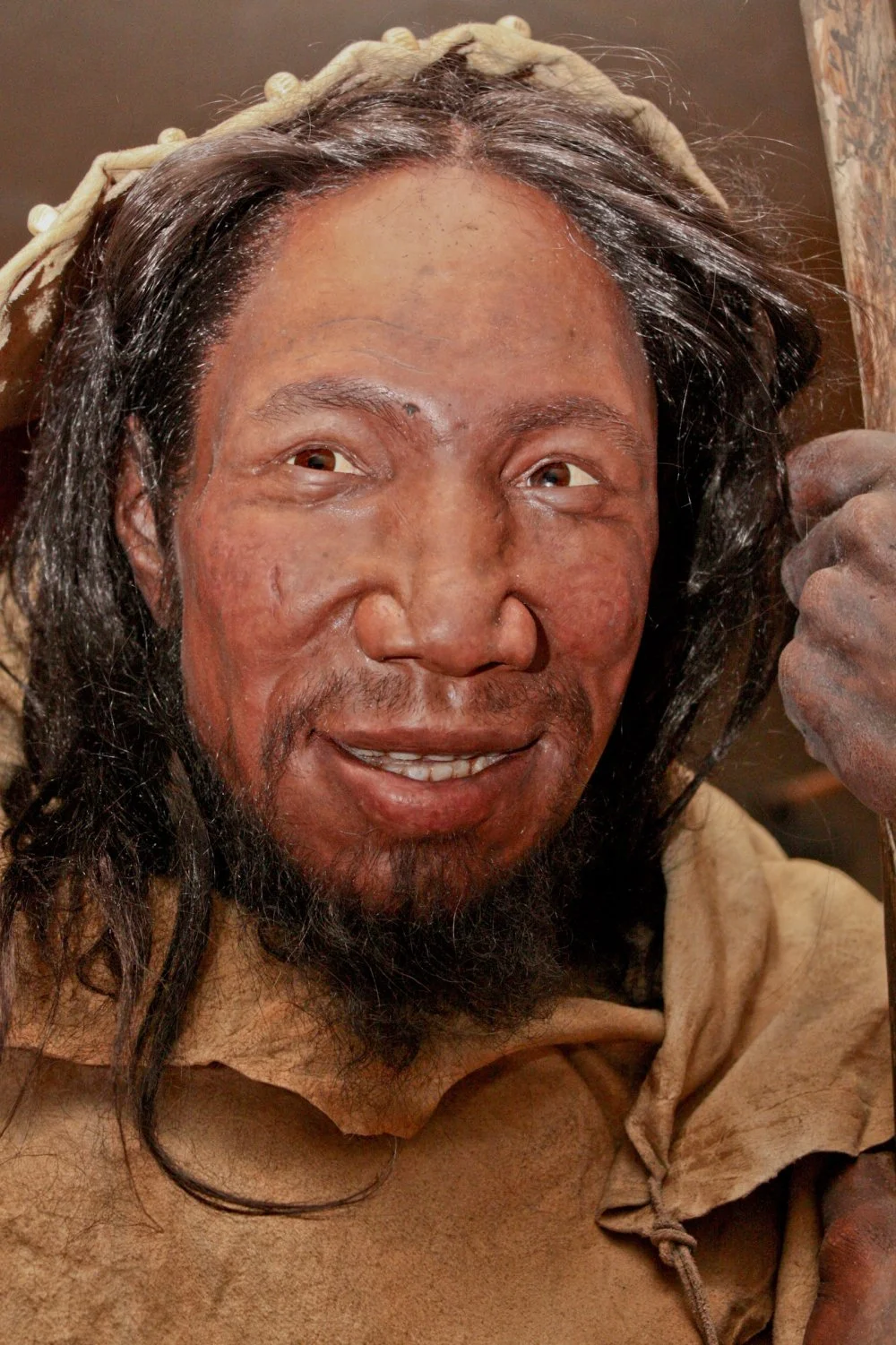
Reconstruction of the upper Palaeolithic human Oase 2 c. 40 000 years BP/Wikimedia commons
Third, we suddenly obtained more information about Denisovan morphology than in the preceding years of studying the finds from the Denisova Cave. Until now, we could say little more about them except the fact that they had very large teeth. Now, anthropologists had at their disposal half of a lower jaw with two molars—a treasure trove of morphological information!
WHAT DID THE DENISOVAN LOOK LIKE?
Let's start with the fact that we haven't actually seen a Denisovan yet—scientists do not have the skull or skeleton of a Denisovan. Our understanding of the Denisovans is from our imaginations, albeit grounded in scientific data. The Xiahe Mandible differs in its bulkiness and archaic form. In particular, it lacks a chin protrusion, which is a distinctive feature of Homo sapiens. By some characteristics, it differs from the jaws of Homo erectus and the Neanderthals. Exceptionally large molars with complex chewing surfaces confirm the proximity of the individual from the Baishiya Cave to the Altai Denisovans. In terms of dental arch shape, the Tibetan Denisovan resembles some early Homo Sapiens as well as late Homo erectus and Homo heidelbergensis. In short, we would describe his appearance as ‘problematic’ or ‘an acquired taste’: he had an excessively massive jaw with a sloping chin. While this may be typically how one envisions tough-looking individuals from the outskirts of cities, believe me, our hero was even scarier.

A close-up of the 3D printed reconstruction of a female Denisovan, unveiled by Professor Liran Carmel, researcher at the Hebrew University in Jerusalem, at a press event in Jerusalem, Thursday, September 19, 2019. It is the first reconstruction of the Denisovan anatomy/Debbie Hill/UPI/Alamy
Anthropologists have long suspected that the Chinese archeologists' collections already contain considerable material related to the Denisovans, and new data on the morphology of Denisovans allows for a reinterpretation of some earlier findings.1
As we have already discussed, DNA is usually not preserved in finds in warmer regions. However, researchers can now test these hypotheses with a new method for identifying fossil bones based on collagen residues. Thus, in the near future, we can expect new and exciting discoveries that will shed more light on the history of the colonization of Asia by different human species.
Even when scientists had the extremely limited material of only one bone and one well-read genome from the entire Denisovan tribe, bold attempts were made to imagine the appearance of these people. What did that little girl, represented by a tiny bone, look like? Well, some features of her appearance could be reconstructed as the human genome contains data allowing us to infer skin, hair, and eye color. If the relationship between these genetic variants and the external characteristics in Denisovans was similar to that in Homo sapiens,i
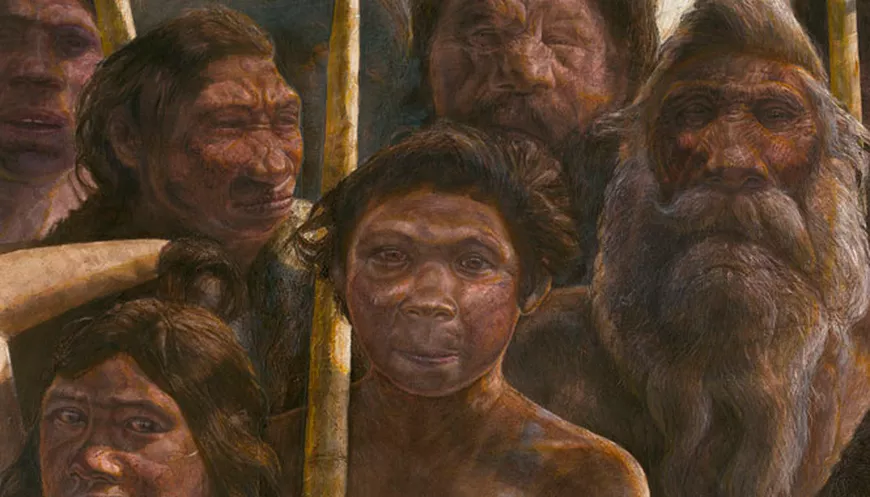
The hominins of the Sima de los Huesos lived some 400,000 years ago in the North of Spain. Kennis & Kennis, Madrid Scientific Films
Learning to describe appearance accurately from a genotype is one of the most important tasks facing modern biology. Its resolution of this challenge will open up fantastic prospects for medical genetics, genetic engineering, and other theoretical and practical disciplines. The results will surpass the experiences of Frankenstein or even some people who are very interested in self-improvement.
Unfortunately, even with a fully sequenced and high-quality genome, we can't say much about the appearance of its owner. Certain surface-level features, such as eye, hair, or skin color, can be somewhat reconstructed. However, the most interesting traits, including skeletal features like cranial shape, tooth size, or pelvic bone proportions, are determined not as much by the amino acid sequences of individual proteins but by the nuances in the regulation of activity (expression) of different genes. These nuances, in turn, depend on complex networks of intergenic interactions, the intricacies of which no one can reliably decipher yet. Theoretically, the task should be solvable, and someday, science, hopefully, will get there. But today is not that day—or tomorrow.
However, there are alternative approaches to consider. For instance, it would be highly beneficial if we could measure the gene expression levels (activity) in Denisovan 3’s pinky phalanx. Gene expression levels serve as an approximation of the final outcome of all the intricate regulatory interactions. To measure expression, we must extract ancient RNAi

A segment of a DNA molecule in the center of which there are two symmetrically (along both chains) arranged methylcytosines in the composition of CpG dinucleotides/Christoph Bock, Max Planck Institute for Informatics/Wikimedia Commons
Nevertheless, paleogeneticists have recently started exploring another possible pathway. This method relies on the methylome. Methylation is a method of regulating gene activity. It involves the attachment of a methyl group to cytosines in the promoter regions of genes, which is where gene transcription begins. Typically, its activity is significantly reduced if many methyl groups are attached to a gene's promoter. We gain valuable insights into gene activity by examining which cytosines in the genome are methylated and which are not. Fortunately, the methylation of cytosines leaves discernible traces in ancient DNA. During post-mortem DNA degradation, unmethylated cytosines tend to convert into uracils, while methylated ones transform into thymines.
Based on this premise, David Gokhman from the Hebrew University of Jerusalem and his colleagues from Israel, Germany, and Spain developed a method for reconstructing methylomes—the profiles of methylation of genomes of fossil hominids. In a study published in September 2019 in the journal Cell, scientists utilized the Denisovan methylome to reconstruct their appearance. Their method rests on the assumption that phenotypic changes resulting from strong promoter methylation resemble those arising from mutations that disrupt gene function or render it completely dysfunctional. This assumption holds weight because in both scenarios, the functionality of the corresponding protein is significantly diminished. The study utilized the methylomes of Denisovans (including Denisovan 3, the same little girl), two Neanderthals (one from the Denisova Cave in Altai and one from the Vindija Cave in Croatia), five ancient Homo sapiens who lived from 45,000 to 7,500 years ago, as well as the methylomes of bones (which is important because methylation profiles differ in different tissues!) of five chimpanzees and fifty-five modern humans.
The data obtained from applying this method was validated by describing the appearance of two already familiar types: Neanderthals and chimpanzees. The reconstructions of chimpanzees and Neanderthals turned out to be remarkably close to reality. For instance, the Neanderthals differ from Homo sapiens in 107 skeletal features, as calculated by the authors. The methylome successfully ‘predicted’ more than half (sixty-two) of these distinctive features.
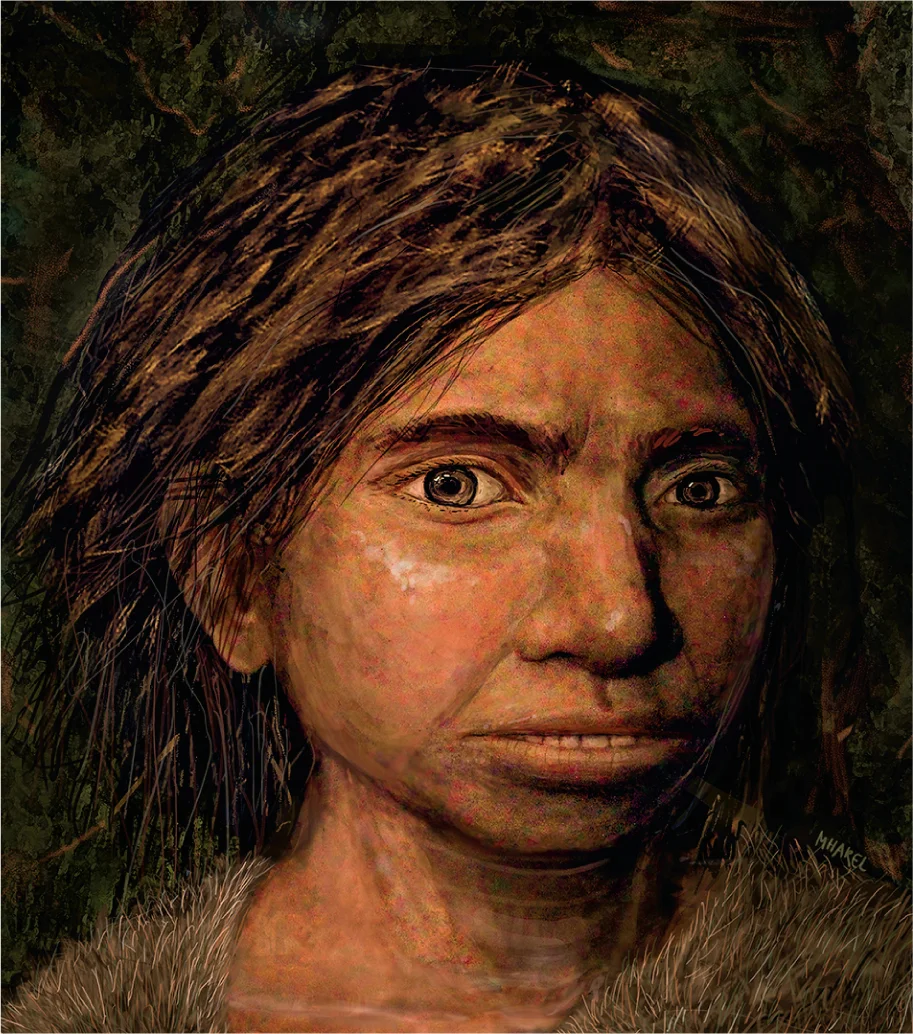
Portrait of a Denisova girl based on the morphology of the skull of Denisova 3, reconstructed by methyl. From the popular synopsis published in the journal Nature (Callaway, 2019) to the article by Gokhman et al., 2019 in the journal Cell/ILLUSTRATION DE MAAYAN HAREL
Having confirmed that the method works, scientists used it to reconstruct the appearance of the Denisovan individual. They identified fifty-six differences in Denisovans (or rather, a specific one, Denisova 3) compared to Neanderthals or modern humans. It turned out that in most features distinguishing Denisovans from modern humans, Denisovans were similar to Neanderthals: robust jaws, a low skull with a broad base, a low forehead, thick dental enamel, a wide pelvis, a large thoracic cavity, and expanded fingertips. However, unlike Homo sapiens and Neanderthals, Denisovans had an enlarged lower jawbone, wider cranial width at the top, and a longer dental arch. This last fact aligns with the discovery that Denisovan teeth are indeed very large. In short, they were a pretty handsome bunch.
